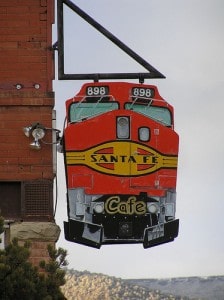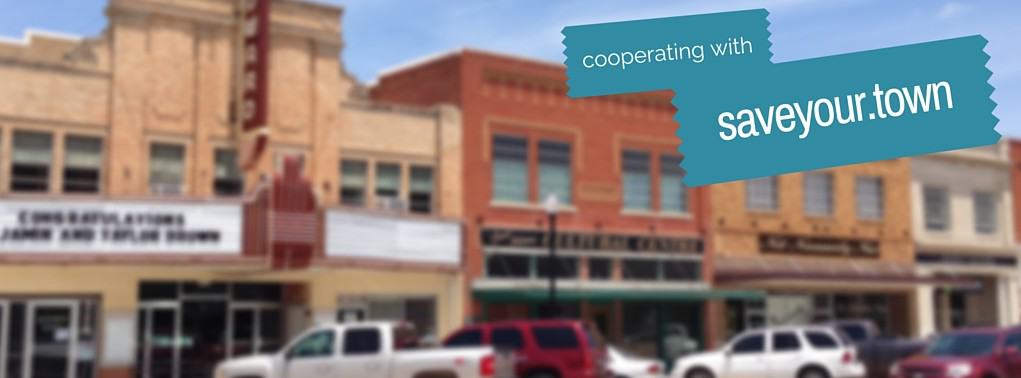
Photo by bjmccray, on Flickr
“If you build it, they will come” may work in the movies. But for small businesses, it is a myth.
People will only come if they know you exist and they know where and how to find you.
You would think that finding a business today is pretty easy given the mapping apps available and the mobile technology we carry with us. And yet, how many times have you walked or driven around trying to locate that store you were told was right here.
This frustrating endeavor happens for several reasons. The most common of these reasons are, first, as a small business owner, we fail to check the online information about our business, including its location, to ensure it is correct. And we may forget to ensure to update that information when we move or simply to make sure nothing has changed.
A second reason, however, why a business can’t be located comes from one simple mistake, not having a sign out front that people can see or that can be read.
Sometimes a zoning regulation, city code or property covenants might be a part of this issue. My daughter has lived in communities that have lots of trees and shrubs and that limit how high up signs can be located. I found it very frustrating to find the place I wanted in those towns. If this is the case, you may want to discuss the issue with other business owners to determine if something could be done.
When designing your sign, consider:
- Orientation. Should it stick out from the building or if it should be across the front of the building or both?
- Font size. The faster the traffic moves by your building, the less time they have to catch your sign. And it is not only the speed but the amount of traffic a person may also be dealing with as well.
- Font typeface. Fancy script or some other unique font is not what you should use. It may be part of your brand but it may make your sign difficult to read
- Color. Use bright, bold colors with substantial contrast between the lettering and the background
- Lighted. Even if your store isn’t open in the evening, lighting your sign gives people a chance to see it and consider coming back some other time.
- Amount of information. Keep the amount of information limited, again to make it easier to read when passing by.
- Sign maintenance. Keep it painted; make sure the lights work: if a letter falls off, get it replaced.
- Multiple signs. Depending on your location, you may need to have more than one.
Not only can signage help people find your business but it can also bring in people who are just passing by. The key factor is your sign must catch the consumer’s eye and tell them enough about what you do as to encourage them to come in.
One final suggestion in terms of a business sign comes if you are in located in a common parking lot with other businesses. If this is the case, you may need a sign on your business as well as having a presence on a group sign to help bring people off the street.
Signage alone can’t be your entire marketing effort. Yet, it has great value in helping the customer make it into your door. Don’t miss out.











Ouch! This really hits home for me. Our store sign was damaged by wind and hail, and we left it there for way too long because it seemed like such a big job to do anything. We managed to find a really plain temporary replacement, but it’s high time to get a permanent solution.
Here’s what’s held us back throughout this process: it’s a big investment. It’s long-term, so you’ll stare at a mistake for a long time. It’s not easy: designs, structures, legal regulations, and comparing costs all make it seem like a big difficult job.
But I’m going to get that new sign ordered. I am.
You are correct that getting and maintaining your sign is just another thing on an already long to-do list for the small-business owner. But as you note, remember it’s an investment.
As a Main Street program board member and the local zoning official, I want to remind everyone to work with your municipal planning and zoning department to understand sign regulations BEFORE you invest in sign design and fabrication. In many communities, you will find that sign regulations in downtown are flexible; for instance, in Downtown Mason City, we allow wall signs, projecting signs, blade signs, canopy and marquee signs and we are quite liberal in the number, type and area of signs allowed. We recently worked with the downtown business community to craft regulations for blade signs (small signs protruding from the wall that are scaled to attract pedestrians). If you think that the requirements are too restrictive or in some way prevent you from being able to reasonably advertise your business, you can work with your local elected and appointed officials to revise the code, or you may meet the standards to grant a zoning variance. In any case, make sure the rules allow the sign you want before you invest in it; it’s always tough to tell someone that they can’t erect a sign that they spent hundreds or even thousands on, because it does not meet the local code.
Thanks for your reminder. It’s important, as Steven notes, to check the rules and regulations before spending your scarce resources. And this is true whether you are on main street, on the edge of town or out on the highway.